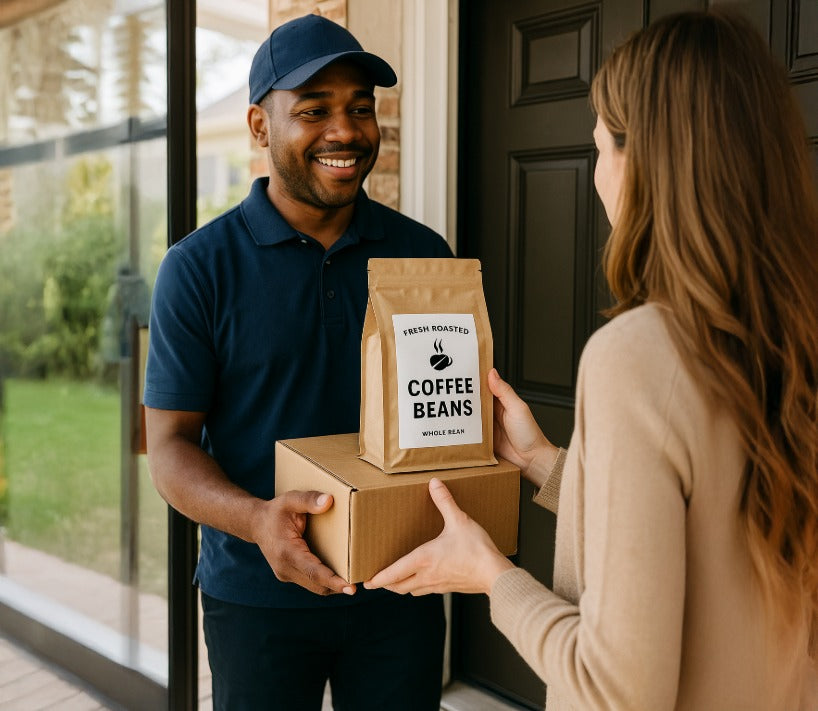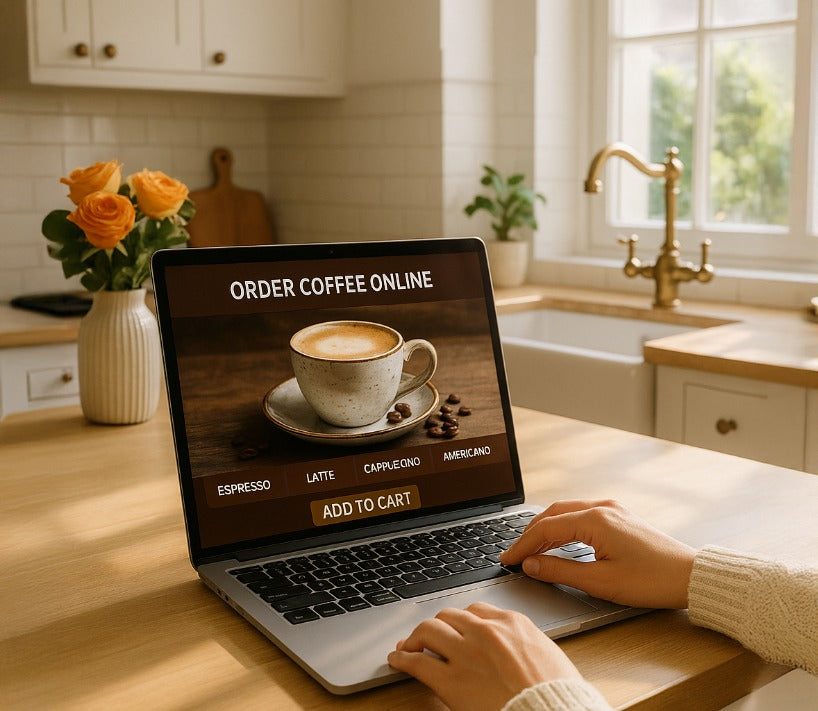Best Coffee To Buy Online: How I Remove the Guesswork for Café-Level Cups at Home
Let’s keep it real: I’ve brewed plenty of cups that tasted like hot cardboard. My early buys were “discount deals,” “best-by” labels, and fancy bags that said “specialty style” without actually being specialty. I wasted time and money.
Best Coffee To Buy Online is not about the flashiest bag. It’s about three simple checks that I use daily as a roaster:
-
Fresh, high-scoring specialty coffee (if the bag never mentions real specialty standards, hard pass).
-
Roast date on the bag (not “best-by”).
-
No deep discounts on “premium” beans (it’s 50% off for a reason—usually old, stale, or past-crop).
The truth: I couldn’t afford to sell you legit, high-scoring beans at 50% off unless I was clearing old inventory. I don’t do that. I roast after you order. No warehouse mystery. No guesswork.
Promise: Follow my simple plan below and you’ll get the best tasting craft coffee at home with beans that actually cooperate—whether you love best pour over coffee beans online or you’re hunting best espresso beans online delivery.
Why “Best Coffee To Buy Online” Lives or Dies by Freshness
-
Roast Date vs Best-By Date: A roast date tells you when flavor started peaking. A best-by date hides how long it sat around. If you want the fresh roasted coffee delivery experience, choose roast-dated beans every time.
-
Peak Window: Most coffees shine from day 4 to day 21 post roast (varies by origin and roast level). This is the sweet spot for clarity, sweetness, and balance.
How to Order Coffee Online Like a Pro (Simple Scoring Checklist)
Use this three-point check the next time you order coffee online:
-
Specialty Verified: Seek high-scoring lots from a roaster who talks openly about quality. If it’s vague “gourmet flavor,” keep moving.
-
Roast-On Demand: Look for roast to order coffee so you’re not buying shelf-tired beans.
-
Transparent Labels: Origin, process, altitude, and flavor notes that actually match the cup.
Want a step-by-step? Read Order Coffee Online Like A Pro.
Single-Origin vs Blends (When to Choose What)
-
Single Origin (SO): Great for learning flavor—fruit, florals, terroir. Ideal for single origin coffee beans online fans who want clarity and sweet, distinct notes.
-
Blends: Built for balance and reliability. I create blends for chocolatey sweetness, syrupy body, and easy dialing in—perfect for best coffee subscription for home drinkers.
Roast Levels (Pick for Your Brew Method)
-
Light Roast Coffee Beans Online: Bright, juicy, and complex—top pick for pour-overs.
-
Medium Roast Coffee Beans Online: Balanced sweetness + clarity; versatile for drip, AeroPress, and lighter espresso.
-
Dark Roast Coffee Beans Online Delivery: Deeper roast character; simple to extract on auto-drip, rich crema for bolder espresso.
Grind, Ratio, and Water (Fast Numbers That Work)
-
Grind: Consistent burr grinder. If your cup tastes sour, go finer; if bitter, go coarser.
-
Ratios (by weight):
-
Pour-Over: 1:16 (e.g., 25g coffee : 400g water)
-
Auto-Drip: 1:16–1:17
-
Espresso: 1:2 (e.g., 18g in : 36g out in ~28–32 sec)
-
-
Water Temp: 198–205°F for filter, 200–204°F for most pour-overs, espresso machine handles it.
Bonus Gear Tip: The Effortless Morning Upgrade
If you want café-simple pour-over without a learning curve, the Fellow Aiden Brewer is a strong upgrade path for consistent, sweet cups every single day.
Comparison Table: Quality-First Roaster vs Run-of-the-Mill Coffee Shop
| Where You Buy | What You Actually Get | Time From Roast | Flavor Outcome | Experience |
|---|---|---|---|---|
| Quality-First, Roast-to-Order (me) | High-scoring, roast-dated, small-batch beans | Roasted after you order | Clear sweetness, origin character, easier dialing | Transparent, educational guidance; coffee beans delivered to your door |
| Run-of-the-Mill Shop | “Premium” claims, no roast date, heavy promos | Unknown; often weeks/months old | Flat, bitter, hard to dial | Sales first; little brew support |
Expert tip: Don’t buy discounted “specialty.” If it’s on deep sale, it’s likely stale or past crop.
Plan (Your Simple, No-Guesswork Path)
Step 1 — Pick Fresh, High-Scoring, Roast-Dated Beans
Start with the category that matches your taste and brew style:
-
Love chocolate, caramel, and a silky body? Choose a balanced blend.
-
Want fruit and florals? Go single origin.
-
Dialing espresso? Medium to medium-dark blends are forgiving for best espresso beans online delivery.
Browse here: Shop my coffees.
Step 2 — Match Grind & Method
-
Pour-Over (V60/Kalita/Aiden): Medium-fine grind, 1:16, 3–3:30 min total.
-
Auto-Drip: Medium grind, 1:16–1:17; let the brewer do its thing.
-
Espresso: Medium-fine; aim for 1:2 ratio and adjust grind for time and taste.
Step 3 — Build a Freshness Habit
-
Buy in sizes you’ll finish in 2–3 weeks.
-
Store in the original bag with one-way valve, resealed tightly.
-
Avoid the fridge/freezer unless portion-packed and sealed airtight.
Want ongoing curation based on your actual taste? Join my closed-capacity program:
Curated Better Morning Coffee at Home Program
Specialty Coffee Guidance You Won’t See on Every Blog
-
Air Roasted Coffee Beans: Cleaner, consistent heat transfer can reduce scorching and highlight sweetness. If you’ve struggled with bitterness, try air-roasted lots.
-
Bloom Test for Freshness: In pour-over, if the grounds don’t bloom (expand with gas release) for 30–45 seconds, you’re likely dealing with tired beans.
-
Filter Choice Matters: Thick paper (like cone-style) can boost clarity and sweetness. If your cups taste muddy, upgrade filters.
-
Water Minerals: If you can, use filtered water; extreme hardness or softness can crush sweetness and balance.
Explore more tips: Best Coffee Bean Buying Guide & Tips and About my roastery.
FAQs For Coffee Lovers at Home
Q1: What makes the “Best Coffee To Buy Online” actually the best?
A1: Freshness (roast-dated), high-scoring specialty lots, and a roaster who prioritizes quality over promos. That’s how you get fresh roasted coffee beans online with consistent sweetness.
Q2: Is single origin or blend better for the best tasting craft coffee at home?
A2: Both work. Single origin gives distinct fruit/flower notes; blends deliver balanced chocolatey sweetness and easy dialing. Choose based on your brew and taste.
Q3: How soon after roast should I brew for peak flavor?
A3: Generally day 4 to day 21 post roast. Espresso can benefit from a few extra days of rest; filter shines earlier.
Q4: Are deep discounts on “specialty” coffee a red flag?
A4: Usually. If it’s heavily discounted, it’s often old or past crop. For real specialty coffee bean delivery, buy roast-dated and on-demand.
Q5: What’s the easiest way to keep beans fresh without gear overload?
A5: Buy smaller amounts more often, keep bags sealed, and finish within 2–3 weeks. That’s how you keep coffee beans delivered to your door tasting café-fresh.
Q6: Can I find organic or fair-trade options when I buy specialty coffee online?
A6: Yes—look for transparent sourcing and certifications where applicable. You can absolutely choose fair trade coffee beans online or organic specialty coffee beans online and still get great taste.
Want a deeper walkthrough (with examples) before you buy specialty coffee online? Read: Order Coffee Online Like A Pro
Also explore: Shop my coffees • Curated Better Morning Coffee at Home Program • Best Coffee Bean Buying Guide & Tips • About my roastery
Extra Best Craft Coffee at Home Pointers
-
Looking for best whole bean coffee online? Start with medium roast blends if you’re new to dialing.
-
Prefer lighter cups? Try light roast coffee beans online featuring citrus or berry notes.
-
Love chocolate and nuts? Medium roast coffee beans online deliver buttery texture and balance.
-
Decaf drinker? Seek best decaf coffee beans online that list the process (EA/Sugarcane or Swiss Water).
-
Want convenient replenishment? A specialty coffee bean delivery schedule (roast-to-order) keeps freshness on autopilot.
-
Searching top specialty coffee online? Focus on clarity of sourcing, roast date, and truthful tasting notes.
-
Need coffee beans delivered to your door with minimal fuss? Choose small-batch small batch coffee roasters online that roast after you purchase.
PS: If you want a no-guesswork coffee delivery experience at home, grab my free Deliver Morning Magic guide:
https://iprefercraftcoffee.com/blogs/news/best-coffee-bean-delivery-2025-fresh-roasted-fast-shipping



